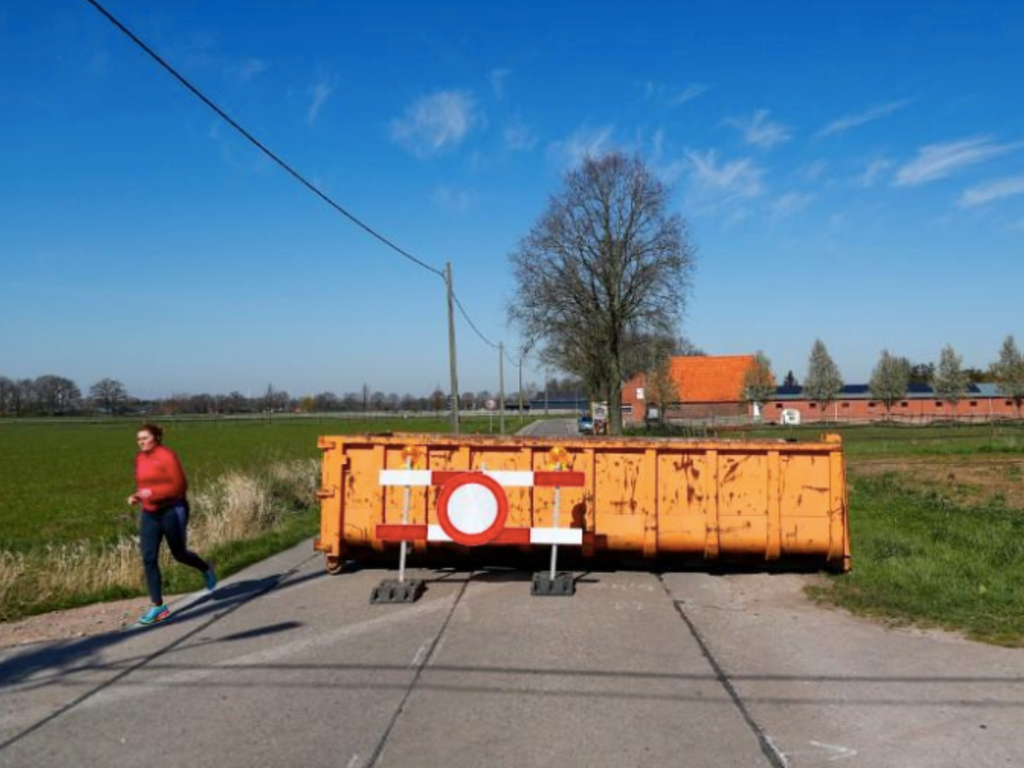Measures to halt the spread of the coronavirus have created an odd situation in a village straddling the Dutch-Belgian border, where opposite sides of the road are in different countries.

For decades, residents have freely gone about their business barely noticing the dotted frontier on the ground, but now tougher lockdown rules in Belgium limit its citizens to food shops and pharmacies, while the Dutch are also allowed to visit the shoe shop, travel agency and optician on their territory.
“These are all Dutch shops, but in Belgium they would have to be closed in this time of coronavirus,” Frans De Bont, mayor of the Belgian municipality Baarle-Hertog, said, pointing at a row of shops on a Dutch street section.
“I live just 50 metres away, I walk by, but I cannot go into any of these shops because I am Belgian,” he told Reuters TV. “We have extra police driving around, but we are calling for understanding from the public.”

One store even had a ribbon down the middle of its premises, marking the border, with the Belgian section off-limits. Belgians are still allowed to go to food shops, a pharmacy or a doctor if they happen to be on Dutch territory.
The village and its surroundings are entirely within the Netherlands, but it also comprises 22 Belgian enclaves that form Baarle-Hertog and, within these, a further eight Dutch micro-enclaves, which belong to Dutch Baarle-Nassau. The border even bisects some properties.
De Bont said the quirky geography stemmed from a feudal system of land swaps and rentals that extend back to 1,000 years ago, and were left in place.
“It used to be very common, but it’s just here that it’s stayed,” he said, adding that efforts to establish a more regular border, including after World War One, had come to nothing.
—
Questions about COVID-19? Here are some things you need to know:
Health officials caution against all international travel. Returning travellers are legally obligated to self-isolate for 14 days, beginning March 26, in case they develop symptoms and to prevent spreading the virus to others. Some provinces and territories have also implemented additional recommendations or enforcement measures to ensure those returning to the area self-isolate.
Symptoms can include fever, cough and difficulty breathing — very similar to a cold or flu. Some people can develop a more severe illness. People most at risk of this include older adults and people with severe chronic medical conditions like heart, lung or kidney disease. If you develop symptoms, contact public health authorities.
To prevent the virus from spreading, experts recommend frequent handwashing and coughing into your sleeve. They also recommend minimizing contact with others, staying home as much as possible and maintaining a distance of two metres from other people if you go out.
For full COVID-19 coverage from Global News, click here.
—




Comments